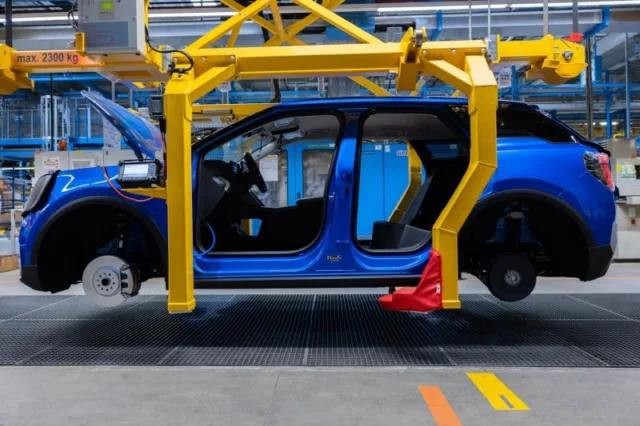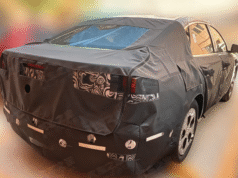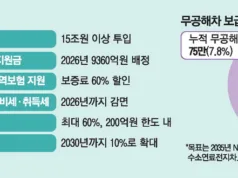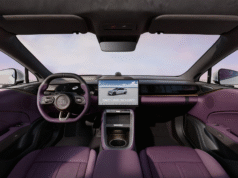American Automakers Need Chinese Batteries
High political walls are hurting an industry vital to the character of the country.
The Ford Explorer electric car stands in the hall at the start of production in North Rhine-Westphalia, Germany, on June 4, 2024. Rolf Vennenbernd/Picture Alliance via Getty Images
In August, Ford and General Motors made a telling choice concerning the future of affordable electric vehicles (EVs). For batteries to power their lower-cost vehicles, both automakers turned to a Chinese giant, Contemporary Amperex Technology Co., Limited (CATL). Ford will utilize its licensing agreement with CATL to manufacture lithium iron phosphate (LFP) batteries domestically. GM will source LFP batteries from CATL for the Chevy Bolt until 2027 “to stay competitive.”
In a year of setbacks for the U.S. EV industry, capped by the loss of the clean vehicle tax credit, the decisions make economic and technological sense. CATL supplies nearly 40 percent of all EV batteries worldwide, making it the clear leader. Tesla, Mercedes-Benz, BMW, Volkswagen, and Toyota all partner with them. Ford and GM know they need to offer lower-cost EV options to the average consumer, so they turned to CATL for LFP batteries—a cheaper alternative to nickel-based lithium-ion cells. Though first developed in the U.S., American manufacturers no longer produce LFP for EVs, with production now dominated by China and CATL.
In August, Ford and General Motors made a telling choice concerning the future of affordable electric vehicles (EVs). For batteries to power their lower-cost vehicles, both automakers turned to a Chinese giant, Contemporary Amperex Technology Co., Limited (CATL). Ford will utilize its licensing agreement with CATL to manufacture lithium iron phosphate (LFP) batteries domestically. GM will source LFP batteries from CATL for the Chevy Bolt until 2027 “to stay competitive.”
In a year of setbacks for the U.S. EV industry, capped by the loss of the clean vehicle tax credit, the decisions make economic and technological sense. CATL supplies nearly 40 percent of all EV batteries worldwide, making it the clear leader. Tesla, Mercedes-Benz, BMW, Volkswagen, and Toyota all partner with them. Ford and GM know they need to offer lower-cost EV options to the average consumer, so they turned to CATL for LFP batteries—a cheaper alternative to nickel-based lithium-ion cells. Though first developed in the U.S., American manufacturers no longer produce LFP for EVs, with production now dominated by China and CATL.
Unfortunately, the moves do not fit with American politicians’ geopolitical vision. Then-Sen. Marco Rubio was one of many critics of Ford’s initial partnership with CATL. Michigan Republican Rep. John Moolenaar said GM’s decision was “disappointing … to the American people.” The Washington consensus is that American companies should not work with Chinese companies, and policymakers continue to make it harder to do so.
But Ford and GM’s moves underscore a blunt reality: If America’s automakers want to compete against Chinese automakers in the global market, they may need to partner with Chinese battery supply chain companies. The American auto industry is facing an existential threat from Chinese automakers. And the future of the industry depends on securing the best batteries, wherever they come from.
The transition to EVs isn’t a question of if, but when. Domestic headlines hide the fact that sales rose by 26 percent globally year-on-year in the first nine months of 2025. EVs now deliver competitive range and superior tech features with costs approaching parity with gas-powered cars.
The United States must do everything possible to ensure its automakers can lead, not lag, in this inevitable transformation. They are currently falling far behind. Most Americans—and many representatives in Washington—don’t see that Chinese automakers are rapidly taking over the world with cheaper, high-quality EVs.
The U.S. exported 1.46 million total vehicles in 2024. China shipped nearly 1.65 million electric vehicles—led by BYD, the world’s top EV maker. Six of the 10 bestselling EV brands last year were Chinese. Xiaomi, described as China’s Apple, did not produce vehicles until December 2023 yet Ford CEO Jim Farley admitted he didn’t want to give up the Xiaomi SU7 after driving one.
It’s understandable Americans don’t see how Chinese automakers are reshaping the global landscape. The vehicles are not on American roads and won’t be in their neighborhood any time soon. Tariffs, safety regulations, and upcoming connected vehicle restrictions make it prohibitive for American consumers to even see Chinese cars on their street. They must rely on YouTube videos or travel abroad to grasp the threat from Chinese automakers.
But the CEOs running the industry understand the threat. Speaking about EVs and competition from China, Hakan Samuelsson, CEO of Volvo, warned, “Some companies will adapt to new circumstances and survive. Others will not.”
Rivian’s CEO, RJ Scaringe, said manufacturers need to focus on the fact that Chinese “cars are actually better.” And Farley called Chinese vehicles an “existential threat.”
An existential threat to Ford and American automakers is an existential threat to countless communities across the country. We have true national champions in the auto sector such as Ford, GM, and Tesla. These brands embody what remains of America’s manufacturing strength, sustaining jobs and communities across the Midwest and South.
Their success is paramount to the long-term success of manufacturing in the United States. The industry employs more than 4 million Americans nationwide and is vital to the character of the country. At a time when America continues to lose manufacturing jobs, Washington should do everything possible to keep the auto industry globally competitive.
We do not have national champions in the battery industry. Instead, U.S. automakers producing EVs domestically rely on Japanese and Korean companies—Panasonic, Samsung, LG Energy, and SK On. They are exceptional companies, producing cutting-edge technologies, and they are investing in America. The recent immigration raid at the LG/Hyundai plant in Georgia was abhorrent. Japan and South Korea are vital partners whose expertise can strengthen U.S. supply chains, and we must ensure they feel confident investing here.
Washington needs to ensure Ford and the other producers can partner with whomever they believe is best for their long-term success. If that’s a Japanese or Korean firm, so be it. Farley warned Ford is “in a global competition with China. … And if we lose this we do not have a future at Ford.” This global competition with Chinese electric vehicles is what drove Farley and Ford to partner with CATL.
U.S. policy should aim to build a competitive and dynamic battery industry where supply chain firms compete, and automakers come out ahead.
Allowing automakers and other companies in the battery supply chain to partner with Chinese battery supply chain companies is the best way to support American car companies, enhance domestic manufacturing, and build a supply chain. High political walls are only hurting our own economy.
Because it is not just CATL. Chinese companies are leaders in production, technology, and know-how. No wonder six of the 10 largest EV battery producers are Chinese. And despite a call to “leapfrog” or focus on next-generation batteries, Chinese producers are the leaders in sodium-ion and solid-state battery production, too.
Even with China’s new export licensing requirements for next-generation battery technology, the U.S. should not shut the door on Chinese producers. Those restrictions target advanced, next-generation chemistries, not the chemistries that power EVs today or in the immediate future. For example, CATL’s state-of-the-art batteries fall well below the energy density limits outlined in the restrictions. The restrictions do not hinder the partnerships that matter most right now.
Some believe the United States should only support local companies trying to break into battery production, including companies with innovative battery chemistries. While America’s can-do spirit is admirable, we are not going to catch up to China and its 10-year head start. And worse off, our automakers could be left behind if we think we can. Surging demand and cutthroat competition in China’s EV market mean that it is most likely going to be CATL, with its 20,000-plus R&D staff, or a rival, that develops the next innovation.
Bloomberg recently highlighted the trip of eight climate venture capitalists that toured China to see firsthand the progress in clean tech in China. The trip left one investor saying, “When it comes to battery manufacturing in the West, China’s dominance means it’s now ‘game over.’” And the recent string of canceled battery factories in the United States bears this out. FREYR, KORE Power, AESC, and Natron Energy have all canceled or halted construction on battery facilities in the United States this year. And Gotion, the one Chinese battery producer looking to expand to the United States, will not move forward with their facility in Michigan after years of political issues which ended with the state government withdrawing financial support.
Events in Europe over the last month show the benefits of a different path forward. The U.S. battery landscape is more advanced than Europe’s, but on the continent, they have not limited Chinese battery supply chain investment. Despite their own real challenges in building a supply chain, partnering with Chinese firms is proving to be beneficial.
The result? Well, BMW announced its new iX3 EV to glowing reviews, thanks in large part to the new battery design produced through a partnership with CATL. The vehicle will have up to 500 miles of range and get 200 miles of charge in 10 minutes.
Then CATL unveiled long-range and fast-charging batteries for the European market. The batteries will be produced in Europe for European automakers. CATL has invested $12.9 billion in Europe through a factory in Germany and upcoming factories in Hungary and Spain. Now Europe needs to guarantee these partnerships include technology transfers and the upskilling of the local workforce.
This production could be happening in the United States if Washington allowed it. China’s ongoing domestic price war is reducing margins for the industry and forcing companies to look to invest abroad. Chinese companies want access to the U.S. market and are willing to enter into licensing agreements that allow for production here. The United States constantly complains about the negative impact of overcapacity in China. But this is a golden opportunity to take advantage of it to support domestic manufacturing by welcoming Chinese firms into the country and learning from them.
In the immediate term, the Trump administration should ensure its final 45X Foreign Entity of Concern “effective control” regulations are not too restrictive. The final rule needs to allow for American companies to license Chinese technology and remain eligible for the 45X Advanced Manufacturing tax credit.
But more importantly, Washington must recognize that an uncompromising anti-China stance in the battery supply chain will only guarantee Chinese automakers’ dominance in the global market. To use the parlance of the last few years, we need to “de-couple” Chinese battery companies from the conversation about critical minerals or automakers.
If we remain on the current trajectory, we are headed for a bifurcated automotive market: a global market, dominated by Chinese brands along with Tesla and the most competitive European and Asian brands; and a U.S. market, cut off, relying on tariffs and protection, and falling further behind. That means less production, fewer jobs, and weaker American competitiveness.
Washington needs a sense of urgency in the face of this daunting challenge. Policy should ensure our national champions are not just protected domestically but allowed to thrive globally. Continuing to limit partnerships with Chinese companies won’t just hurt Ford or GM, it will weaken U.S. manufacturing, workers, and America’s place in the global auto industry. The EV transition is inevitable, and whether the United States emerges stronger will depend on whether Washington gives its automakers the freedom to compete on a truly global stage.
Kevin Brunelli is a nonresident fellow at the Center on Global Energy Policy at Columbia University SIPA. He was previously on the Critical Minerals and Energy Technologies team at the U.S. State Department where he served as the lead for East Asia and Australia along with lithium, nickel, and minerals and energy technologies facing export restrictions from China. He is the author of Charged States on Substack.
Stories Readers Liked
The Scramble for Critical Minerals

Trump’s Chaotic Agenda Has a Critical Through Line
What do Greenland, Canada, and Ukraine have in common? Critical minerals.



























Join the Conversation
Commenting is a benefit of a Foreign Policy subscription.
Subscribe
Subscribe
Already a subscriber?
.
View Comments
Join the Conversation
Join the conversation on this and other recent Foreign Policy articles when you subscribe now.
Subscribe
Subscribe
Not your account?
View Comments
Join the Conversation
Please follow our comment guidelines, stay on topic, and be civil, courteous, and respectful of others’ beliefs.
View Comments
Change your username |
Log out